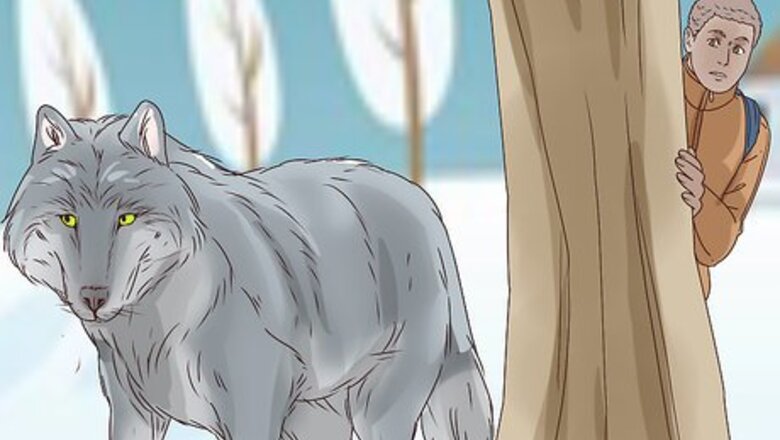
views
Escaping an Attack
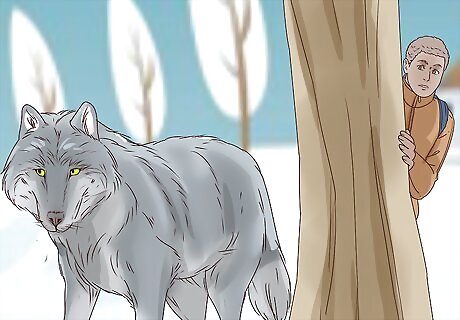
Avoid areas where wolves have been seen. Avoid being seen. If you see the wolf before it sees you, walk away silently. Stay vigilant. Remember: where there's one wolf, there are likely more wolves around. Wolves sometimes travel alone, but they almost always hunt in packs.

Back away slowly, if the wolf sees you. Always maintain eye contact, and do not turn your back. If you try to escape, keep the wolves in front of you. If the wolves get behind you, their predatory instincts may kick in. Slowly back away while facing the pack.
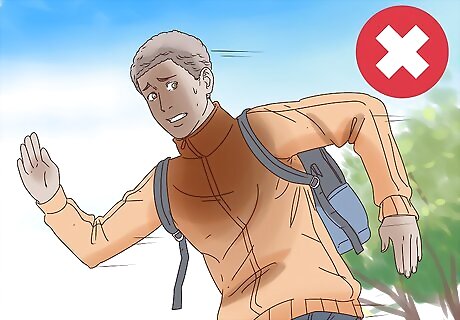
Don't run. Wolves are faster than you, especially when you're navigating the woods. Furthermore, running will cause a wolf's prey drive to kick in. If the wolves weren't chasing you before, there's a good chance that they'll start chasing you when you run.
Reacting to an Attack
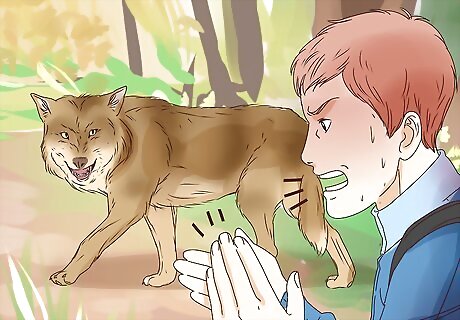
Act aggressively and loudly, if approached. Step towards the wolf, make noise, yell, and clap. Back away slowly. Keep acting aggressively, and keep making noise. Maintain eye contact with the wolf, and do not turn your back. Do not try to fight the wolves unless you have absolutely no other option. Wolves are strong and smart, with powerful jaws and a killer instinct. There's a chance that you'll be able to fend off a lone wolf, but you don't want to find yourself at odds with a group. Breathe deeply and try to keep calm. Wolves can sense your fear. If you panic, you risk freezing or running, thereby losing your ability to fight to save your life.
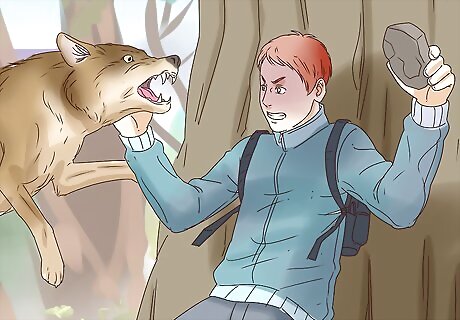
Fight back. If the wolf attacks, fend it off with sticks, rocks, bear spray, air horns, or any weapon that you have. Find an easily-defensible position: stand with your back against a tree or a large rock. You don't want the wolves to get behind you. Do not try to "hide in plain sight" or curl up into a fetal position. This will not stop a wolf from killing you. In most cases, an attacking wolf will only leave if you intimidate it and present a bigger threat than it is willing to chance.
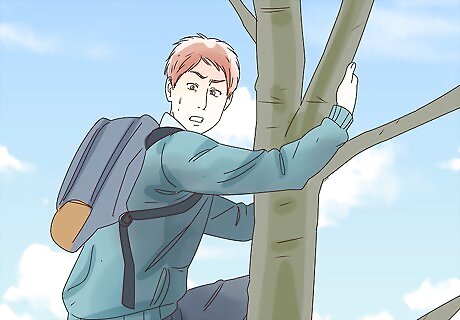
Stay alert. If you do manage to drive off the wolf, get to safety calmly and quickly. Climb a tree, a boulder, or another high landscape feature. If possible, get inside a nearby car or building. Do not relax just yet. The wolf may be skulking near you or your campsite, awaiting another chance. If a wolf is particularly hungry, it may try to attack again.
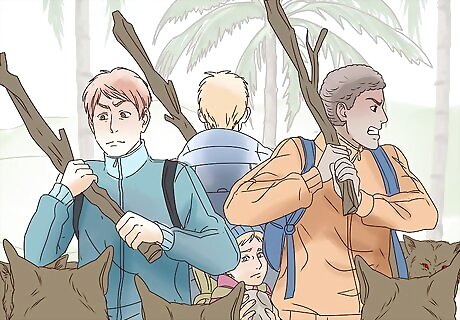
Band together. If you are in a group that's being attacked by wolves, make sure to keep all children and injured people in the center. When wolves attack herds of prey, they target the weakest link: young, the old, and the sick. No matter what, do not break the group up. Make sure that you have a person watching in every direction so that the wolves can't outflank your group. Wolves aim to find the weakest link in prey groups. They are viewing you all as prey. Children are the most likely to be targeted, as they are the smallest and the weakest. When wolves do attack humans, they attack children in an overwhelming majority of cases. This is how arctic wolves hunt musk oxen. They watch the herd from a distance, waiting for the flanks to open up when one of the adult oxen is distracted. They penetrate the interior of the herd to get to the weaker oxen within.
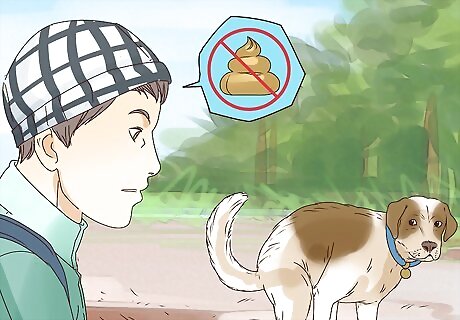
Keep a close eye on your dog. If you are hiking with your dog in wolf territory, keep the dog in your sight. Pick up its poop, keep it quiet, and try to keep it from peeing everywhere. All of these actions will attract wolves, and they will view you and your dog as intruders. Both wolves and domestic dogs use urine and droppings—along with scratches from their claws and scent rolling—to mark their territory, and wolves may attack a dog that they feel is encroaching on their territory.
Staying Safe when Camping
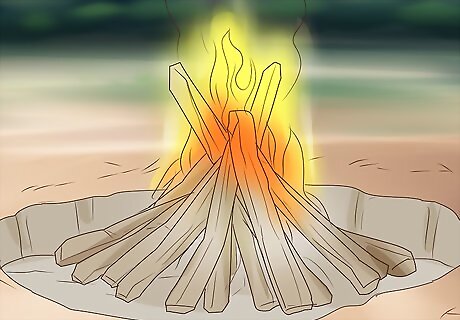
Build a fire. If wolves are prowling around your camp, light a smoky fire to keep them at bay. Use green leaves and damp wood to make as much smoke as possible. When you have some smoking embers, move them near a tree, or disperse them between several trees. Apply sap or resin to the branches, and light them. Try to waft the smoke downwind toward the wolves. Wolves dislike fire and smoke because it appears dangerous to them. If the wolves have pups around (which is likely in spring, when wolf pups are born), then the fire may cause them to move to another den site if the breeding female believes that the safety of her pups is being threatened.

Create a defensive shelter. Use branches, stones, sharp sticks, and other solid objects to create a barrier around your site. If well-constructed, this may keep wolves from getting in – but don't forget that they'll still be able to smell you and hear you.

Make a lot of noise. Wolves howl to claim their territory, and they may interpret the noise as you claiming your territory. If you are in a group, sing and shout together. Be as loud and fierce as possible. Avoid trying to imitate a wolf howl. This may draw the wolf to you. Lone wolves howl to locate the other members of their pack, and wolves have been known to come running when humans imitate wolf howls.
















Comments
0 comment